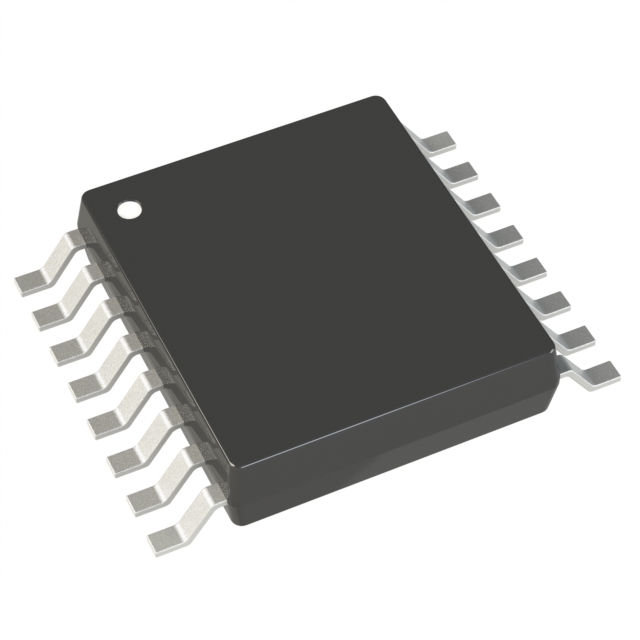| 1.What is IGBT |
| 2.IGBT structure and main characteristics |
| 3.How does an IGBT work? |
- Original content, please do not reprint.
1.What is IGBT
The IGBT is a device composed of a MOSFET (input stage) and a PNP transistor (output stage), possessing the following two characteristics. It combines the low drive
power and fast switching speed of MOSFET devices (control and response) with the low saturation voltage and high capacity of bipolar devices (power level is more durable).
Its frequency characteristics lie between those of MOSFET and power transistors, allowing it to operate normally within the tens of kHz frequency range. The application
areas of IGBTs have been continuously expanding, and they have been used in high-voltage applications, receiving very positive feedback.
2.IGBT structure and main characteristics
The core structure of an IGBT is a composite switching device designed by combining MOSFET and GTR (bipolar power transistor) technologies. Its basic construction involves
adding a P+ layer to the drain of a power MOSFET, thus forming an IGBT. This design allows the IGBT to combine the advantages of both MOSFET and bipolar power transistors.
In an IGBT, the N+ region is called the source region, with the electrode on it referred to as the source (i.e., emitter E); the P+ region is called the drain region. The control region
of the device is the gate region, with the electrode on it referred to as the gate (i.e., gate G).
The channel is located at the boundary of the gate region. The P-type region between the collector (C) and emitter (E) (including both P+ and P-regions) is known as the
sub-channel region (Subchannel region), where the channel is formed. On the other side of the drain region, the P+ region is called the drain injection region (Drain injector), which
is a unique functional area of the IGBT. The drain injection region, together with the drain region and the sub-channel region, forms a PNP bipolar transistor, functioning as the
emitter to inject holes into the drain, thereby reducing the on-state voltage drop through the conductance modulation effect. The electrode on the drain injection region is called the
drain (i.e., collector C). This distinctive structural design enables the IGBT to excel in efficient switching and low on-state losses.
![]()
The IGBT is composed of an N-channel MOSFET and a PNP-type GTR. In practice, it is a composite transistor with the GTR as the dominant component and the MOSFET as the driving
element. The IGBT not only contains a PNP transistor structure but also an NPN transistor structure. This NPN transistor is turned off by short-circuiting its base and emitter to the
source metal terminal of the MOSFET. The 4-layer PNPN structure of the IGBT includes both PNP and NPN transistors, forming a thyristor structure that may cause the IGBT's column effect.
The ideal equivalent circuit and the actual equivalent of IGBT are shown in the figure:
![]()
Therefore, when a positive voltage is applied between the gate and emitter to turn on the power MOSFET, the base-collector junction of the PNP transistor is connected to a low resistance,
thus placing the PNP transistor in an on state. Due to the addition of a p+ layer at the drain, holes are injected from the p+ layer into the n base during the on state, leading to a change in
conductivity. As a result, compared to the power MOSFET, it can achieve extremely low on-state resistance.
After that, when the voltage between the gate and emitter is 0V, the power MOSFET is first in the open circuit state, and the base current of the PNP transistor is cut off, so that it is in the
open circuit state.
As mentioned above, IGBT and power MOSFET can be controlled by voltage signals to turn on and off.
3.How does an IGBT work?
(1)Analysis of the IGBT conduction process: When an N-channel IGBT is in forward blocking mode, if a forward voltage exceeding the threshold voltage VTH is applied between the gate and emitter,
an inversion layer (i.e., conductive channel) will form on the surface of the P layer below the gate. At this point, electrons from the N-type layer below the emitter electrode begin to inject into the
channel, acting as minority carriers in the PNP transistor to participate in conduction. If the voltage between the collector and emitter exceeds 0.7V at this time, holes will be injected from the P+ layer
of the collector substrate into the N-drift region, inducing a conductivity modulation effect (bipolar operating mode), significantly reducing the saturation voltage between the collector and emitter.
(2)In terms of device structure, the J1 junction formed between the P+ substrate and the N-drift region plays a crucial role in conduction. When a forward bias is applied to the gate, the P base region
below the gate becomes inverted, forming an N channel and generating electron flow, a process similar to how power MOSFET works. At the same time, the J1 junction being in a forward-biased state
allows hole injection into the N-region, modulating the resistivity between the anode and cathode. This modulation effect not only reduces conduction losses but also triggers the flow of the second type
of carrier (holes). Ultimately, two current topologies form within the semiconductor: one is electron flow (MOSFET current), and the other is hole flow (bipolar current).
When the gate-emitter voltage is greater than the turn-on voltage), MOSFET the channel is fully formed, providing base current to the PNP transistor, and the IGBT enters the conducting state. At this point,
the conductance modulation effect significantly reduces the resistance of the N-drift region, thereby lowering the on-state voltage drop and enhancing the device's conduction efficiency.
IGBT Turn-off Process: When a reverse voltage is applied between the gate and emitter or the drive signal is removed, the conductive channel inside the MOSFET disappears, cutting off the base current of
the transistor, and the IGBT enters the off state. Specifically, when a negative bias is applied to the gate or the voltage falls below the threshold, the inversion layer cannot be maintained, and the channel is
blocked, thus cutting off the electron flow into the N-drift region, while hole injection also ceases. However, the turn-off process of the IGBT is not instantaneous. In the early stage of turn-off, the MOSFET
current drops rapidly, while the collector current shows a gradual decrease, due to the injection of a large number of minority carriers (holes) into the N-drift region during forward conduction. As the channel
electron flow is interrupted, the collector current drops sharply, but because there are still a few residual carriers (holes) in the N-drift region that need to recombine, the collector current further decays slowly,
forming what is known as the "tail current."
The attenuation characteristics of the trailing current mainly depend on the carrier density at the time of turn-off, which is affected by the doping concentration, device structure, layer thickness and temperature.
This minority carrier recombination process leads to a typical trailing waveform of the collector current.








